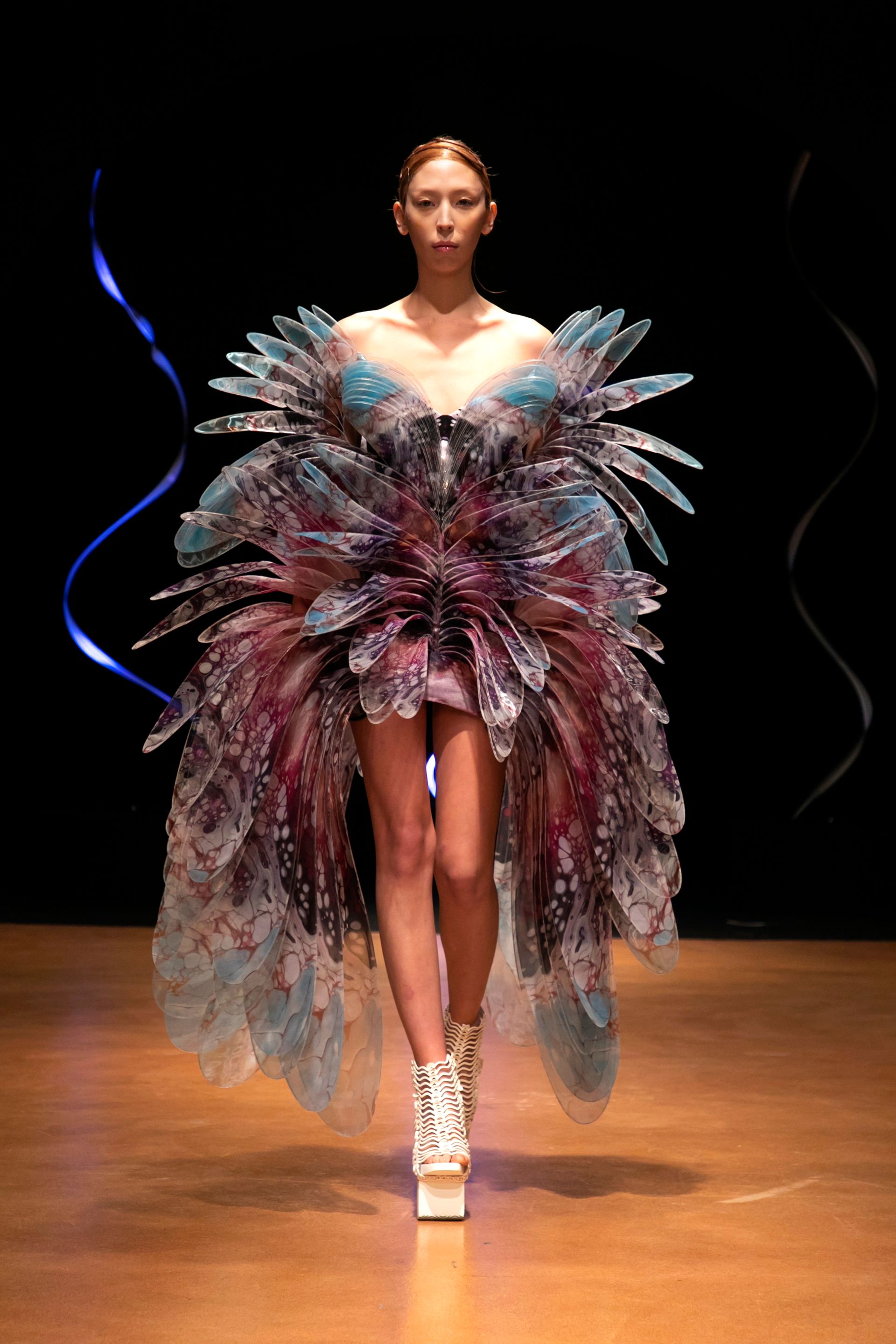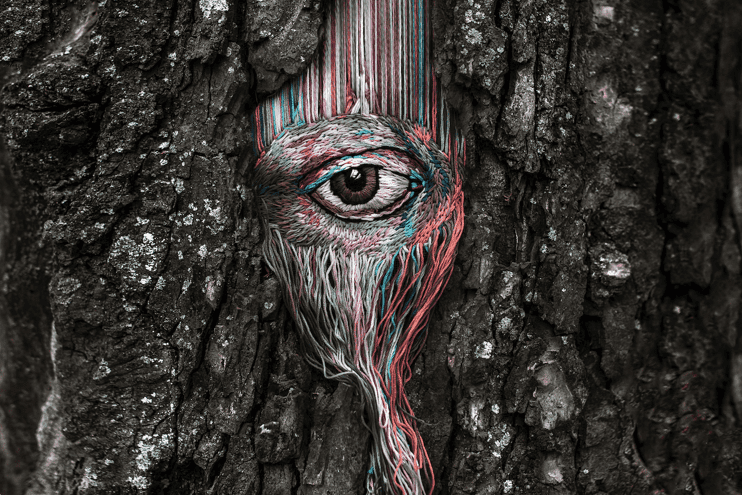Na swoim koncie@fashion.biologiquepublikuje zestawienia wybiegowych sylwetek i natury. Inspiruje się kolorami pancerzy insektów, ptasimi piórami, bakteriami, delikatną arabeską pleśni, stworzeniami z morskich głębin. Po drugiej stronie znajdziemy Alexandra McQueena, Driesa Van Notena, Valentino – Iris van Herpen ma tu specjalne względy. Zdjęcia opatrzone są komentarzem godnym Davida Attenborougha – poinformowanym, ale czułym i zabawnym. Przewrotny jest też opis profilu: „Tata zabrał mi Vogue’a, więc czytam encyklopedię”. Autorka mieszka w Bostonie w stanie Massachusetts. Studiowała biologię i socjologię, a obecnie pracuje w reklamie. Jill Sherman pytamy o to, jak wpadła na taki pomysł.
Jak to się wszystko zaczęło?
Jill Sherman: Zawsze kochałam naukę i świat naturalny. Od dziecka miałam artystyczne inklinacje, rysowałam insekty, morskie stworzenia i konie. Dosyć wcześnie w moim życiu tata postanowił pozbyć się telewizora, co tylko wzmocniło moją ciekawość świata. Rodzice zachęcali mnie i moje rodzeństwo, żebyśmy bawili się na zewnątrz. Spędzałam godziny w ogrodzie, podnosiłam kamienie, grzebałam w ziemi w poszukiwaniu robaczków. Zawsze miałam brudne palce, które moja mama szorowała potem do czysta.
Jesteś na bieżąco ze światowymi wybiegami. Co cię łączy ze światem mody?
Ze światem mody łączy mnie tylko moje uwielbienie i pasja dla niej. Przyciągają mnie zawiłe detale, niezwykłe kolory i niespodziewane faktury, których pełno na wybiegach. Oglądanie pokazu jest często doświadczeniem podobnym do podziwiania natury – zwłaszcza, jeśli wpływy są w tak oczywisty sposób widoczne. Mam na myśli właśnie faktury, kolory, kształty albo to, jak porusza się tkanina. Projektanci przestrzegają wielu z tych praw, dzięki czemu z ich kreacji emanuje piękno.
Jacy są twoi ulubieni projektanci wszech czasów?
Iris Van Herpen, Alexander McQueen, Molly Goddard, Mary Katrantzou i Kei Ninomiya.
A jakich młodych projektantów wskazałabyś jako najbardziej obiecujące talenty?
Z mojego profilu można łatwo wywnioskować, że obserwuje to, co robią młodzi projektanci. W ich pracach znajduję dużo inspiracji naturą. Może to przypadek, ale z drugiej strony wydaje mi się, że młodsze pokolenie jest bardziej związane z Ziemią. Są bardziej eko-świadomi, a w trakcie projektowania chętniej podejmują estetyczne ryzyko. Wspaniale jest to obserwować. Obecnie z przyjemnością śledzę projekty Ivana Pilja, Caroline Hu, Adeline Ziliox, Ernesto Naranjo i Iris Klaver.
Kim są twoje autorytety na polu nauk przyrodniczych?
Jak przebiega twój proces twórczy?
Oglądam pokazy online i zapisuje sylwetki, które przypominają mi naturę. Albo przeglądam look booki i internetowe portfolia mniejszych projektantów. Potem wyszukuję w sieci zdjęcia insektów, kwiatów, morskich istot, które dane ubranie przywiodło mi na myśl.
Najtrudniejszą częścią tego procesu jest znalezienie zdjęcia, które by mi odpowiadało. Wiele z nich robionych jest przez naukowców w terenie, jako dokumentacja gatunku. Często nie są dobrze oświetlone albo mają niską jakość. Miałam jednak szczęście znaleźć kilku wspaniałych fotografów natury, np. Franka Canona i Barbarę Batokovą, którzy dali mi dostęp do swoich prac specjalnie po to, żebym mogła używać ich na swoim Instagramie.
***Oryginalny tekst angielski***
This Instagram account is gaining more and more attention from fashion lovers. It’s visionary in its simplicity and surely will amass tons of followers, believers and imitators. It dives into the world of microstructures, sublimed contrasts and gradients.
Posts by@fashion.biologiquecompare runway silhouettes and nature. The collages are inspired by thoraxes of insects, birds' feathers, delicate arabesques of mold or deep sea creatures. On the other side there is Alexander McQueen, Dries van Noten, Valentino—Iris van Herpes holds a special place in this collation. The posts are captioned with Attenborough-worthy commentary: equally knowledgeable, tender and amusing. The author of fashion.biologique lives in Boston, Massachusetts, USA. She studied biology and sociology, and currently works in advertising. We ask Jill Sherman where she got such a brilliant idea. How did it all start for you?
I think the love of science and the natural world was always there. I was very artistic from an early age, and would draw bugs, sea creatures, and horses. I also think that my curiosity was accelerated by my dad throwing away the TV when I was very young. My parents encouraged me and my siblings to play outside. I remember spending hours in the garden, lifting up rocks and digging through soil looking for insects and worms. I always had dirty fingernails that my mother had to scrub clean.
You certainly are up to date with major runways. What are your ties to the fashion world?
I have no direct ties to the fashion world other than my love for it. I'm naturally drawn to intricate details, unusual color combinations and unexpected textures, which are prevalent in fashion. Watching the runways can often feel like appreciating the beauty of natural world, especially when influences are so clearly there. The structure, the colors, the forms, and even the flow of fabric. They follow many of the laws of the natural world, and it's beautiful to see designers incorporate these forms into their collections.
Who are your favourite designers of all time?
Iris Van Herpen, Alexander McQueen, Molly Goddard, Mary Latrantzou, and Kei Ninomiya.
Do you keep your eye on young designers? Who do you find interesting/promising?
I definitely keep my eye on young designers, and you'll see them throughout my comparisons. I see a lot of natural influences with the younger designers. This may just be coincidence, but I think it may also be linked to their deeper connection to the Earth. They tend to more eco conscious and take some beautiful risks with their designs, which is wonderful to see. Some of my current favorites are Ivana Pilja, Caroline Hu, Adeline Ziliox, Ernesto Naranjo, and Iris Klaver.
Any major authorities in the nature sciences world?
Naturalist Aron Sanchez
Ethical Bio Hackers
Nature Photographer Barbora Batokova
Photographer Frank Canon
Macro photographer Dustin Rhoades
Microbiologist Hunter Hines
Biomimicry professor Jonathan Torres
NOAA
What is your creative process?
I watch the runway shows online and save the looks that remind me of a natural influence. Or I flip through the look books and online portfolios of smaller designers. Then I search online for a photo of the insect, sea creature, flower, etc. that each look reminded me of.
The hardest part of the creative process is finding a good comparison photo. A lot of the photos are taken by scientists out in the field as a way to document the specimen. So, they're not often lit properly, or the photo quality is low. I have been lucky enough to find some amazing nature photographers, like Frank Canon and Barbara Batokova, who have given me access to their photo libraries for me to use on my Instagram.

1/21

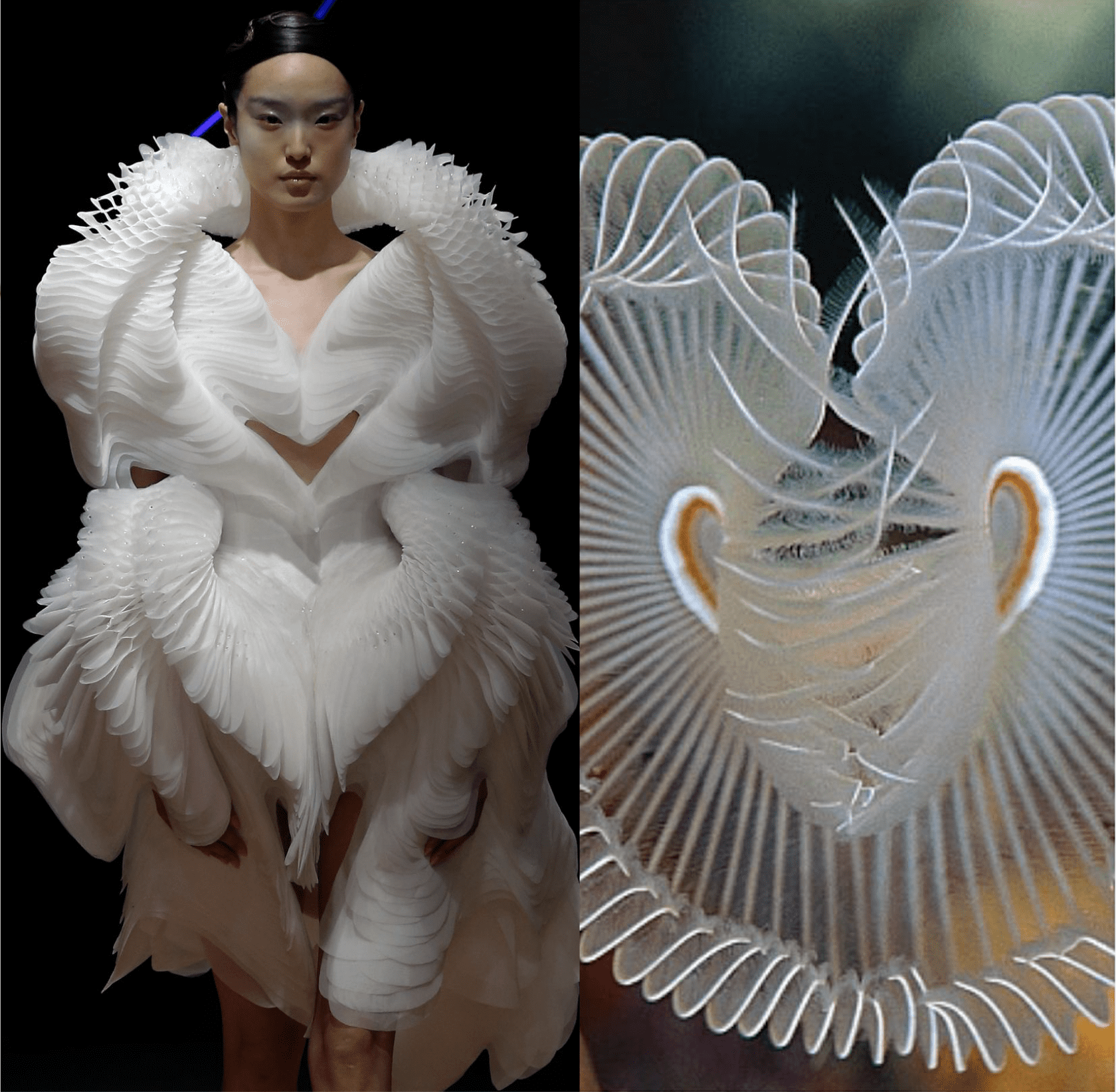
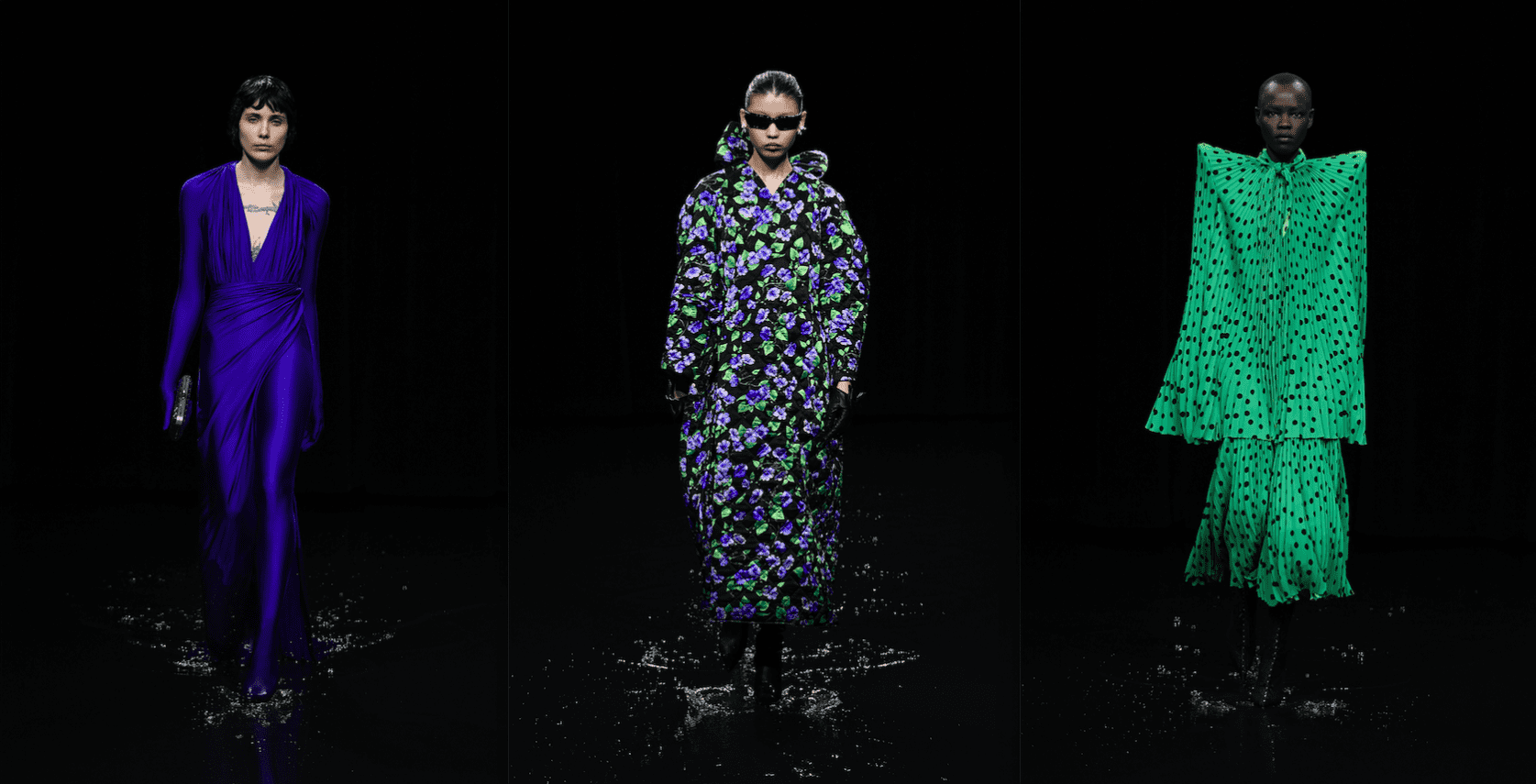
![Michał Sosiński maluje polskie rodziny z internetu: „mam mnóstwo zdjęć polskich mężczyzn na komputerze” [wywiad]](https://kmag.s3.eu-west-2.amazonaws.com/articles/5e721f6e49335429df15010d/Z_cyklu_MEZCZYZNI_Czeslaw_z_Kolobrzeg.jpg)
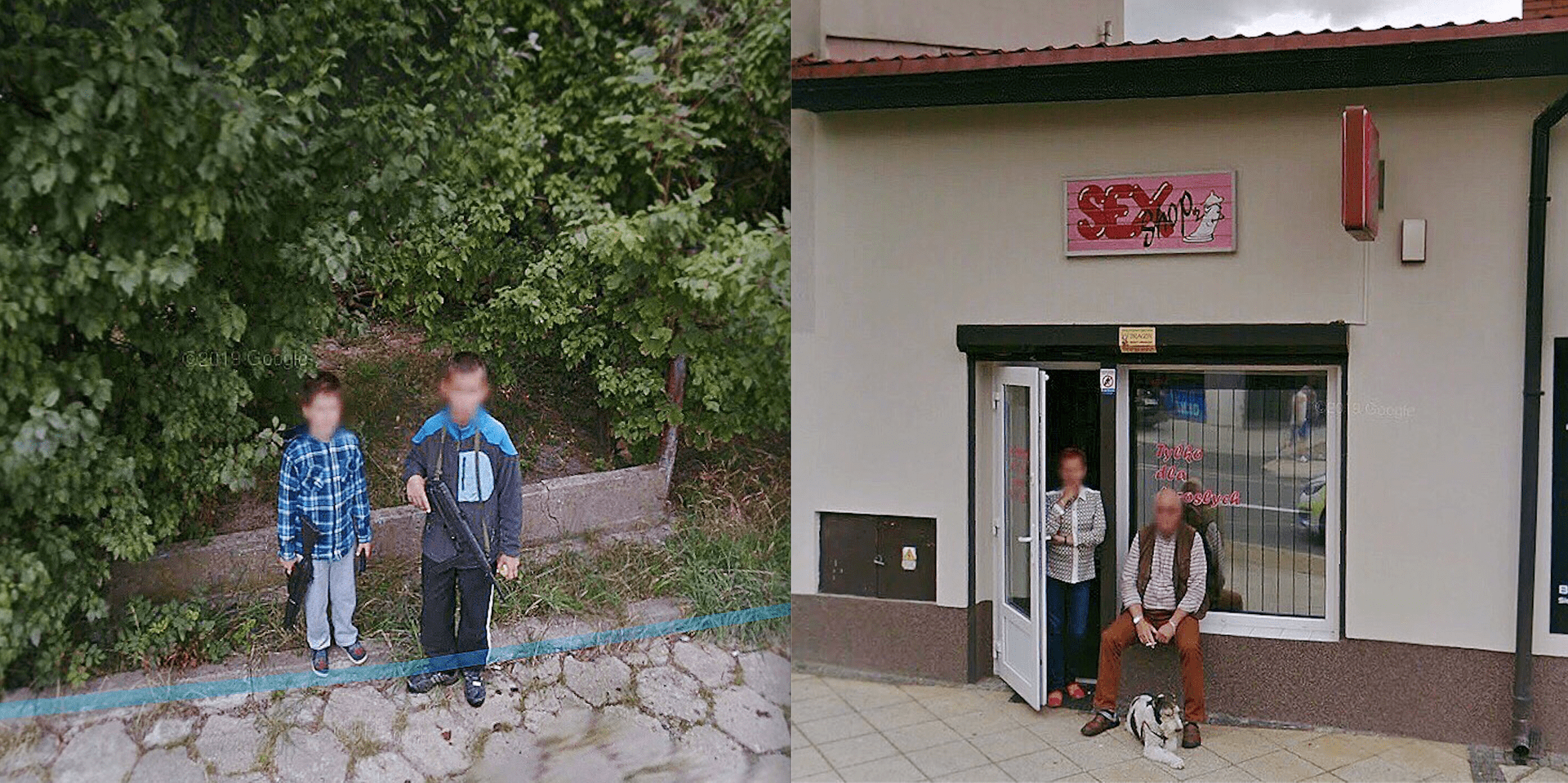

![Michał Sosiński maluje polskie rodziny z internetu: „mam mnóstwo zdjęć polskich mężczyzn na komputerze” [wywiad]](https://kmag.s3.eu-west-2.amazonaws.com/articles/5e721f6e49335429df15010d/Z_cyklu_MEZCZYZNI_Czeslaw_z_Kolobrzeg.jpg)


